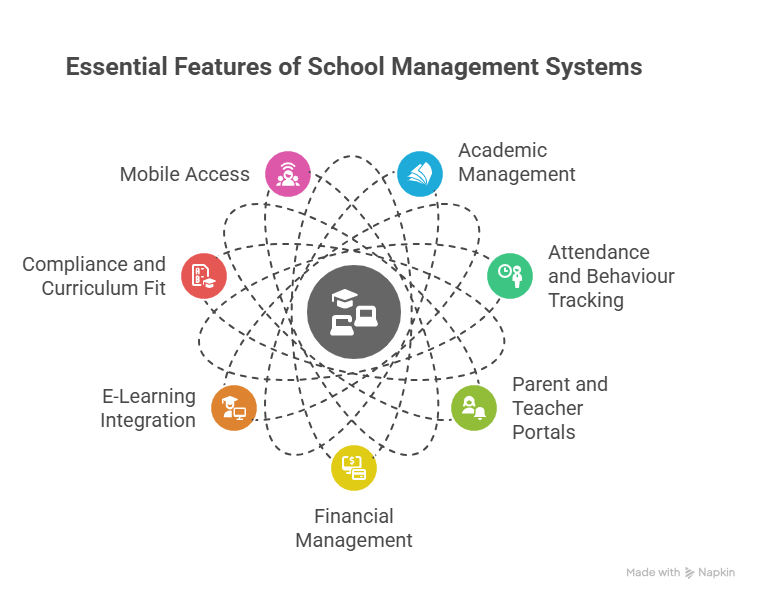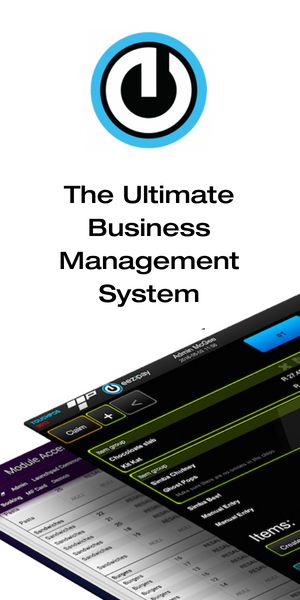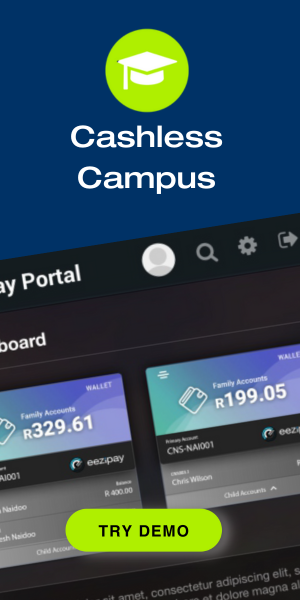Technology is rapidly transforming the education sector, and at the heart of this evolution lies one critical tool – a reliable school management system. Across South Africa, schools are adopting these platforms to simplify administration, enhance communication, and support learners, teachers, and parents more effectively.
Whether you’re managing a public high school in Gauteng or a small independent school in the Western Cape, staying ahead means more than just adopting tech – it means choosing the right tools for long-term success. A well-chosen school system can streamline operations, enhance collaboration, and improve the overall learning experience for everyone involved. As highlighted in the Department of Basic Education’s (DBE) Strategic Plan, digitisation is a key pillar in improving efficiency, accountability, and inclusivity in education. That’s why now, more than ever, is the ideal time to invest in a system that fits your school’s unique needs.
But with so many school management systems on the market, how do you know which one is the best fit? How do you balance features, cost, scalability, and local relevance, all while ensuring your choice adds real value?
That’s where this guide comes in.
We’ll walk you through everything you need to know about selecting the best school management system in 2025, from must-have features to practical evaluation tips, so your school can make an informed choice that delivers long-term results.
Table of Contents
What Is a School Management System?
Before diving into how to choose the best option, it’s important to understand what a school management system does and how it supports the day-to-day running of a school.
A school management system is a software platform that enables educational institutions to manage their day-to-day operations efficiently. It centralises and automates tasks such as admissions, attendance, academic tracking, parent-teacher communication, and financial management.
These systems provide a single dashboard or portal that connects administrators, educators, parents, and learners in a digital environment, simplifying workflows and enhancing transparency.
Common Challenges Without a School Management System
Many schools still rely on manual systems such as paper records or basic spreadsheets. These outdated approaches come with several challenges:
- Inefficient Admin Workloads: Admin teams waste valuable time on repetitive manual tasks.
- Poor Communication: Parents are often left uninformed about important updates, payment deadlines, or learner performance.
- Limited Data Access: Manual systems don’t allow for real-time analytics or reporting.
- Payment Collection Issues: Tracking fees, issuing receipts, and following up on overdue accounts is cumbersome.
- Lack of Accountability: Paper trails are difficult to audit, which may lead to errors or financial mismanagement.
Without a centralised system, these challenges can accumulate over time, slowing progress and limiting the school’s ability to innovate.
Why South African Schools Need School Management Systems
South African schools operate in uniquely complex environments, often juggling limited budgets, large class sizes, and a growing demand for digital access. School management systems help schools meet these challenges by addressing key operational and educational needs. Here’s how:
1. Streamlining Administration
Managing school operations can be a logistical nightmare, especially for underfunded or large institutions with high student counts. A school management system automates tasks such as attendance tracking, exam scheduling, and financial planning, improving efficiency and reducing human error.
2. Bridging the Communication Gap
South Africa’s education system frequently faces challenges in engaging parents and fostering strong home-school relationships. Modern school management software enhances communication by sending updates on grades, attendance, and important events directly to parents via mobile apps or SMS.
3. Supporting Hybrid and Remote Learning
COVID-19 demonstrated the importance of flexible learning models. Systems with built-in e-learning capabilities enable schools to continue teaching whether students are at home or in the classroom.
4. Data-Driven Decisions
Having accurate and accessible data is vital in improving student performance and operational efficiency. With real-time access to student performance and behaviour data, educators can make informed decisions faster. This is particularly helpful in large schools or those facing resource constraints.
Key Features to Look for in a School Management System
Not every platform is built with the South African school context in mind. Prioritise the following features when comparing systems:
1. Academic Management
The system should include tools for managing academic schedules, student progress, and resources. This includes maintaining digital gradebooks and automating report card creation, which can save hours each term.
2. Attendance and Behaviour Tracking
Attendance management should extend beyond traditional record-keeping, enabling schools to identify patterns of absenteeism and provide better support to at-risk learners. Some systems also allow behaviour tracking to support targeted disciplinary interventions.
3. Parent and Teacher Portals
These portals encourage ongoing communication. Parents can receive updates, pay fees, and access progress reports, while teachers can log grades, communicate, and schedule meetings.
4. Financial Management
A robust system helps automate school fees, track payments, and generate invoices. Look for integration with payment platforms that support EFTs, cards, and mobile money.
5. E-Learning Integration
For hybrid or remote setups, e-learning integration is critical. The system should allow teachers to upload lesson plans, host assignments, and track student progress all digitally. Think of it as a seamless way to unify education and administration.
6. Compliance and Local Relevance
Choose a solution that balances strong local support and compliance with Department of Education requirements while also having the flexibility to support international curricula like IEB or Cambridge, ensuring it meets diverse academic frameworks.
7. Mobile Access
Mobile compatibility is non-negotiable, especially in communities with limited access to desktop computers. A mobile-friendly platform ensures everyone in your school community stays engaged.
If you’re also considering going cashless, explore these cashless school payment platforms trusted by South African schools.
Benefits for Different Stakeholders
A strong school management system does more than just organise data. When implemented well, it delivers value to every part of the school community:
For School Administrators
- Centralises data and reduces duplication of effort
- Simplifies reporting, audits, and compliance
- Increases visibility across academic and financial operations
For Teachers
- Saves time on grading, attendance, and parent communication
- Enables digital sharing of resources and lesson plans
- Offers real-time insights into learner progress and needs
For Parents
- Provides real-time updates and transparent communication.
- Enables secure fee payments and access to progress reports
- Builds trust through consistent engagement
For Learners
- Improves access to learning materials
- Encourages accountability for attendance and performance
- Supports hybrid and online learning experiences
How to Choose the Right System for Your School
Follow these steps to evaluate and implement the ideal school management solution for your institution in 2025.

Step 1: Define Your Goals
List your school’s most pressing needs. Are you looking to reduce admin time, improve fee collection, or boost parental engagement? Achieve better academic tracking? Write a clear list of goals before shortlisting systems.
Step 2: Do Your Research
Compare solutions based on online reviews, demo feedback, and feature availability. Some popular local platforms catering to South African schools include SA-SAMS, D6, and Ed-admin.
Step 3: Request a Demo
Never rely solely on marketing promises. Request product demos to see the interface in action and ensure it aligns with your school’s needs. Focus on usability—an overly complicated platform will frustrate teachers and cripple adoption.
Step 4: Evaluate Support Options
Support should be available during school hours, ideally with South African-based service teams who understand your context.
Step 5: Check for Scalability
Your school may grow, or your needs might evolve. Ensure the system can scale with additional campuses, users, and features.
Step 6: Prioritise Budget-Friendly Options
Request pricing based on your school’s size and needs. Many providers offer tiered pricing or flexible packages, and it’s worth asking about discounts or customised plans, especially if you’re a smaller or under-resourced school.
Want tips on digitising more than just admin? Read: How to Become a Cashless School in 5 ‘Eezi’ Steps
How to Ensure a Smooth Implementation
Even the best school management system can fall short without proper planning. Here are a few best practices to help your school succeed from day one:
- Start with a pilot: Roll out to one grade or department before implementing it fully.
- Create an internal rollout team: Include IT, administration, and key educators who can effectively champion the system.
- Set clear expectations: Communicate goals and timelines to staff, parents, and students.
- Monitor and adapt: Use system data and feedback to optimise usage and address challenges.
- Provide ongoing training: Offer regular refresher sessions for staff and update training materials as the system evolves.
A thoughtful implementation strategy ensures long-term adoption, avoids frustration, and maximises the return on your investment.
The Power of the Right School Management System
Selecting the right school management system isn’t just an IT investment. It’s a strategy to empower your school to tackle the challenges of modern education confidently. When thoughtfully chosen, these systems remove friction, foster collaboration, and enable educators to do what they do best: teach.
Imagine fewer admin headaches, better parent engagement, and clearer performance insights—all in one platform. With the right school management system, your school isn’t just surviving the digital shift—it’s leading it.
When South African schools harness the tools of automation, data-driven insights, and seamless communication, they’re more than just efficient—they’re better positioned to deliver meaningful outcomes for students in 2025 and beyond.
Final Thoughts: Your Next Step
As South African schools embrace digital transformation in 2025, a reliable school management system becomes the foundation for streamlined operations, enhanced data, and stronger community engagement.
Whether you’re looking to reduce administrative overload, improve learner tracking, or enhance parent communication, selecting the right system is a strategic decision that impacts every aspect of your school.
While Eezipay isn’t a school management system, it integrates seamlessly with platforms that are helping you streamline school payments, simplify reconciliation, and enhance your overall digital ecosystem.
Curious how Eezipay complements your school’s management system?
Book a demo to see the integration in action
Contact us to explore integration options tailored to your school, or
Download our free Cashless Campus Guide for more digital best practices.







